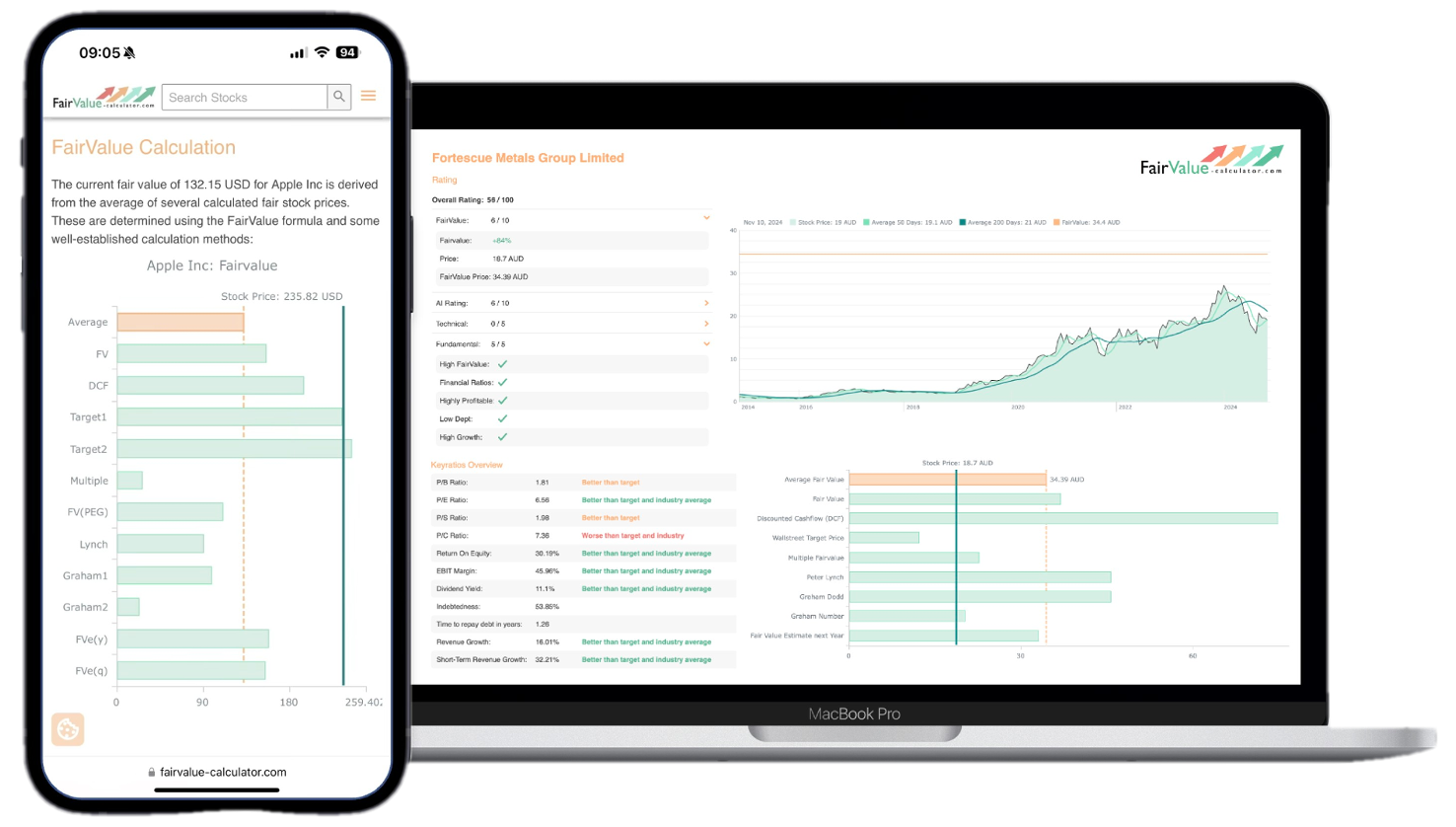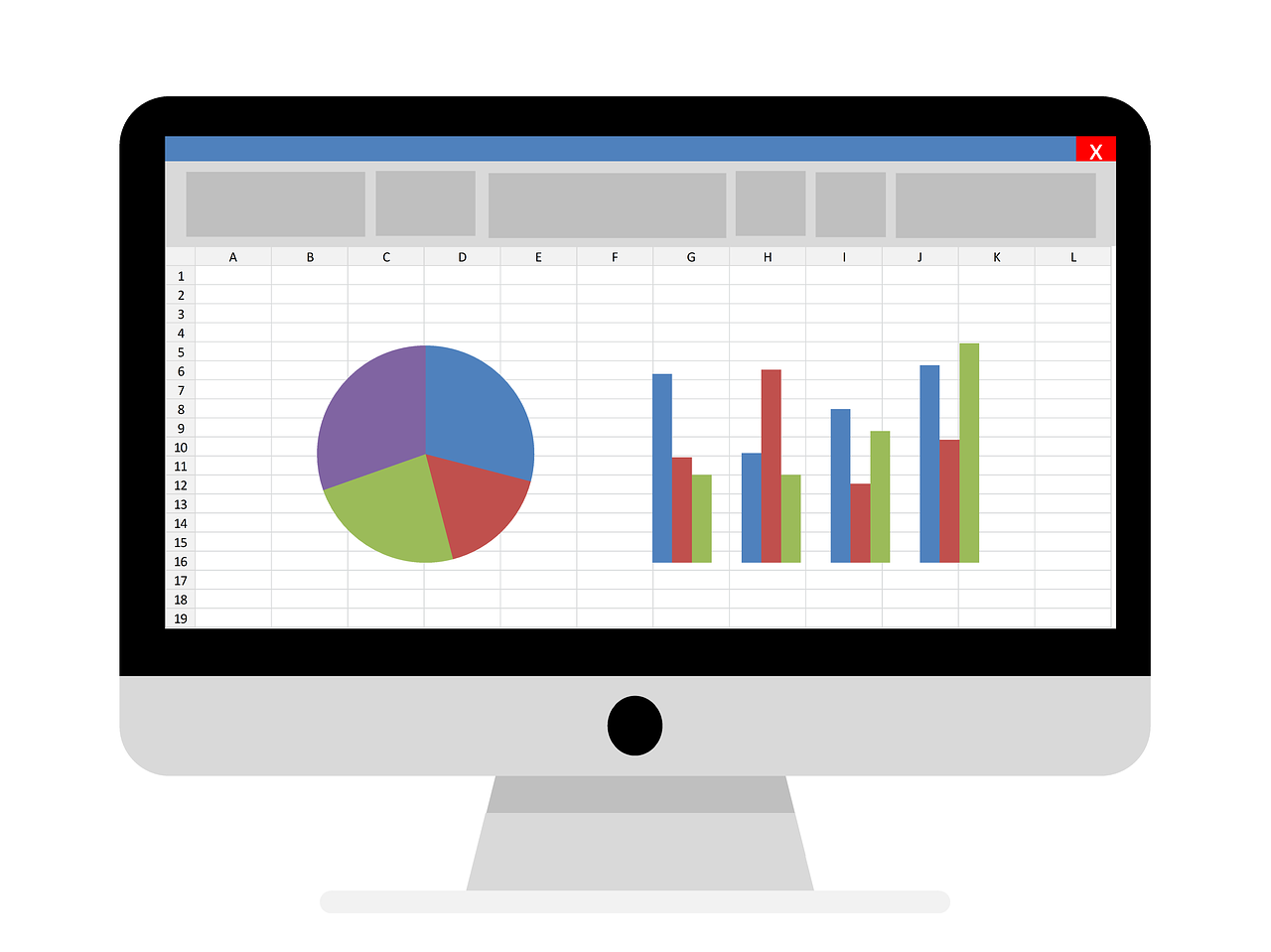Navigating the complex world of investments can often feel like wandering through a dense forest without a map. With countless strategies and tools available, investors might find themselves overwhelmed by the multitude of choices laid before them. Among these tools, fair value estimates stand out as a beacon of guidance for many. These estimates aim to provide a clear picture of an asset’s true worth, potentially illuminating profitable pathways that might otherwise remain obscured. But should investors place their trust in these calculations when making critical financial decisions?
The allure of fair value estimates lies in their promise to cut through market noise and present a balanced view of an asset’s potential. Yet, just like any other method, this approach comes with its own set of challenges and nuances. Understanding both the benefits and pitfalls of relying on fair value estimates is crucial for any stakeholder eager to maximize returns while minimizing risks. In this blog, we’ll explore whether these estimates should be your go-to tool—or merely one part of a diverse investment strategy.
💡 Discover Powerful Investing Tools
Stop guessing – start investing with confidence. Our Fair Value Stock Calculators help you uncover hidden value in stocks using time-tested methods like Discounted Cash Flow (DCF), Benjamin Graham’s valuation principles, Peter Lynch’s PEG ratio, and our own AI-powered Super Fair Value formula. Designed for clarity, speed, and precision, these tools turn complex valuation models into simple, actionable insights – even for beginners.
Learn More About the Tools →🚀 Test the Fair Value Calculator Now!
Find out in seconds whether your stock is truly undervalued or overpriced – based on fundamentals and future growth.
Try it for Free →
The Basics of Fair Value Estimates
Fair value estimates represent a systematic attempt to quantify what an asset—be it a stock, bond, real estate property, or private equity stake—should theoretically be worth under ideal market conditions. Unlike market price, which reflects actual trading activity at any given moment, fair value seeks to capture intrinsic worth determined by underlying fundamentals such as cash flows, growth prospects, and risk factors. Fundamental analysts often rely on widely accepted methodologies including discounted cash flow (DCF), comparables analysis (comparing price-to-earnings or price-to-book multiples), and asset-based valuations to arrive at this figure. By harmonizing various inputs—projected revenue growth, cost of capital, and industry benchmarks—fair value estimates aim to deliver a transparent, replicable gauge of true worth.
To streamline these calculations, investors can leverage specialized tools or even automated platforms like the fairvalue-calculator, which integrate real-time financial metrics and sophisticated modeling frameworks. Such calculators can dramatically reduce manual effort, standardize assumptions, and minimize human error. However, it’s essential to recognize that fair value estimates are only as reliable as the assumptions and data feed driving them. Whether you choose to conduct your own DCF in a spreadsheet or rely on a cloud-based valuation engine, the core objective remains the same: to arrive at an unbiased estimate that cuts through market volatility and points you toward opportunities that may be undervalued or overpriced relative to their intrinsic characteristics.
Explore our most popular stock fair value calculators to find opportunities where the market price is lower than the true value.
- Peter Lynch Fair Value – Combines growth with valuation using the PEG ratio. A favorite among growth investors.
- Buffett Intrinsic Value Calculator – Based on Warren Buffett’s long-term DCF approach to determine business value.
- Buffett Fair Value Model – Simplified version of his logic with margin of safety baked in.
- Graham & Dodd Fair Value – Uses conservative earnings-based valuation from classic value investing theory.
- Intrinsic vs. Extrinsic Value – Learn the core difference between what a company’s really worth and what others pay.
- Intrinsic Value Calculator – A general tool to estimate the true value of a stock, based on earnings potential.
- Fama-French Model – For advanced users: Quantifies expected return using size, value and market risk.
- Discount Rate Calculator – Helps estimate the proper rate to use in any DCF-based valuation model.
Advantages of Using Fair Value Estimates in Investments
One of the chief benefits of employing fair value estimates in your investment process is the enhanced clarity and discipline they bring. By establishing an objective benchmark, investors can systematically screen for assets trading significantly below or above their calculated worth. This disciplined approach mitigates the emotional decision-making that often triggers impulsive buying at peaks or panic selling at troughs. With a clear fair value target, market fluctuations become less intimidating, as you have a rational basis for entry and exit points. Additionally, this method fosters consistency across different asset classes, ensuring that all investment opportunities are evaluated on a like-for-like basis regardless of market sentiment or hype cycles.
Another advantage is the potential for improved risk management. Fair value models inherently incorporate assessments of future cash flows and discount rates, which reflect a company’s cost of capital and risk profile. By quantifying expected returns in relation to perceived risks, investors can prioritize opportunities where the upside appears substantial relative to downside vulnerabilities. This risk-adjusted lens helps allocate capital more efficiently and avoid overpaying for speculative or highly leveraged ventures. In essence, fair value estimates form the bedrock of a data-driven, repeatable investment process—one that aligns well with the long-standing principles of value investing champions and professional portfolio managers alike.
Limitations of Relying Solely on Fair Value Estimates
Despite their analytical rigour, fair value estimates are not infallible. At the core of every valuation lies a web of assumptions—growth rates, discount factors, terminal multiples—and even small deviations can drastically alter the final figure. Overconfidence in these inputs may lead investors to overlook black swan events or sudden shifts in industry dynamics that invalidate prior projections. Moreover, fair value models often struggle to account for qualitative factors like brand strength, management quality, or technological innovation, all of which can materially influence an asset’s future trajectory.
Relying exclusively on fair value estimates can also blind investors to market realities. Market prices reflect the collective wisdom, sentiment, and liquidity of countless participants, whereas fair value is ultimately a theoretical construct. An asset might remain mispriced for extended periods, rendering timely profit-taking challenging. Additionally, model biases—such as overly optimistic long-term growth or underestimation of competitive risks—can skew valuations. Hence, while fair value estimates are powerful tools, they should be paired with broader market context and qualitative judgments rather than serve as the sole basis for investment decisions.
Factors Influencing Fair Value Estimates Accuracy
At the heart of any fair value estimate lies the precision of underlying assumptions. Key variables include projected revenue growth, profit margins, discount rates, and terminal values. Small shifts in each can have compounding effects on model outputs, magnifying estimation errors. For instance, underestimating the cost of capital by even one percentage point may inflate a fair value estimate significantly, leading to misguided investment signals.
External factors also play a pivotal role. Economic cycles, regulatory changes, and industry disruptions can swiftly invalidate previously valid assumptions. Data reliability is equally crucial; outdated financial statements or inaccurate analyst forecasts can derail valuation integrity. Consequently, maintaining up-to-date information, stress-testing various scenarios, and incorporating sensitivity analyses are essential practices to uphold the accuracy and robustness of fair value estimates.
Incorporating Fair Value Estimates Into Investment Decision-Making
Should I rely on fair value estimates for investment decisions? The answer lies in how you integrate these metrics into a comprehensive framework rather than depending on them in isolation. Begin by using fair value as a screening tool—identify securities trading at a significant discount to their intrinsic value. Combine this data-driven approach with qualitative analysis such as assessing management competence, competitive moats, and ESG factors. This dual-layered methodology ensures that you’re not merely chasing numbers but investing in enduring business models.
Practical implementation often involves setting predefined buy and sell thresholds around the fair value target. For example, an investor might plan to accumulate shares when the market price falls 15% below fair value and trim positions once it exceeds 10% above. Incorporating automated alerts from platforms like the fairvalue-calculator can streamline this process. By embedding fair value estimates within a disciplined portfolio management system—complete with risk controls and position-sizing rules—you transform abstract valuations into actionable strategies that balance opportunity with prudence.
Case Studies: Success Stories with Fair Value Estimates
Historical performance across varied market cycles underscores the potential of fair value–driven strategies. Consider the case of Company A, a mid-cap technology firm whose stock experienced a market sell-off amid sector-wide fears in 2018. Analysts who conducted rigorous discounted cash flow analyses identified that its share price was trading nearly 30% below intrinsic value. Investors who adhered to these fair value signals purchased the stock during the dip. Over the next two years, as fundamentals recovered and market trust returned, the stock outperformed the broader index by nearly 50%, validating the power of disciplined valuation-based entry points.
Another illustrative example involves a consumer staples giant undergoing temporary margin pressure in 2020. Fair value models, adjusted to account for short-term disruptions, still indicated an attractive risk-adjusted return. Investors equipped with this insight held on through transitional challenges and benefited from robust returns when the company normalized operations. These case studies demonstrate how fair value estimates, when properly constructed and adhered to, can guide investors toward significant outperformance by aligning purchase decisions with intrinsic worth rather than fleeting market emotions.
Risks Associated with Overlapping Valuation Models
Employing multiple valuation frameworks—such as discounted cash flow, relative multiples, and asset-based approaches—can enhance confidence in your fair value estimate, but it also introduces the risk of overlapping biases. When models share similar inputs (e.g., revenue forecasts or cost of capital assumptions), they may produce convergent outputs that obscure underlying uncertainties. Relying on several models without recognizing this overlap can create a false sense of precision.
Moreover, model diversification isn’t a panacea. Divergent valuation results can leave investors perplexed: Should you trust the cash flow–driven price or the comparable-based multiple? Without a clear protocol to reconcile conflicting valuations, decision paralysis may set in. To mitigate these risks, establish a hierarchy of models aligned with the specific asset class and available data. For example, prioritize DCF for mature, cash-generative businesses, while relying more on multiples for cyclical or early-stage ventures. Consistency and transparency in model selection criteria help avoid the pitfalls of overlapping valuation architectures.
Alternative Approaches to Supplement Fair Value Estimates
While fair value estimates provide a quantitative anchor, they should not be the sole compass guiding investment actions. Technical analysis offers one complementary lens, examining price trends, volume shifts, and chart patterns to time entry and exit points. Sentiment indicators—such as put/call ratios or consumer confidence indices—can also signal contrarian opportunities when market emotion veers to extremes.
Another potent supplement is scenario planning, which constructs multiple “what-if” cases ranging from best- to worst-case market environments. Layering scenario analyses onto your base fair value model highlights how valuation shifts under varied economic or competitive landscapes. Finally, incorporating macroeconomic overlays—interest rate forecasts, inflation expectations, and geopolitical risk assessments—enriches your investment thesis by framing fair value estimates within broader market contexts.
Regulatory Considerations for Using Fair Value Estimates
Regulatory frameworks around fair value accounting and disclosures have evolved to foster transparency and consistency. Under standards such as IFRS 13 and ASC 820, public companies must adhere to rigorous fair value hierarchies, distinguishing observable market inputs from unobservable management estimates. Investors leveraging fair value estimates should understand these distinctions to gauge the conservatism or aggressiveness of reported numbers.
Compliance requirements also extend to third-party valuation providers, which must validate their methodologies and maintain independence from audited firms. Awareness of potential conflicts of interest and regulatory audits can guide investors toward more reputable sources of fair value data. Ultimately, by aligning your analytical process with prevailing accounting standards and disclosure mandates, you reinforce the credibility of your investment decisions and reduce exposure to accounting irregularities.
Conclusion: Striking a Balance Between Fair Value Estimates and Diverse Investment Strategies
Fair value estimates offer a powerful lens through which to view investment opportunities, providing structure, discipline, and an objective measure of intrinsic worth. However, no single tool can capture every facet of market dynamics or business complexity.
By blending fair value analysis with qualitative assessments, technical insights, and macroeconomic context, investors can build resilient portfolios that harness the strengths of various approaches. Striking this balance transforms fair value estimates from isolated metrics into integral components of a diversified, risk-aware investment strategy.







